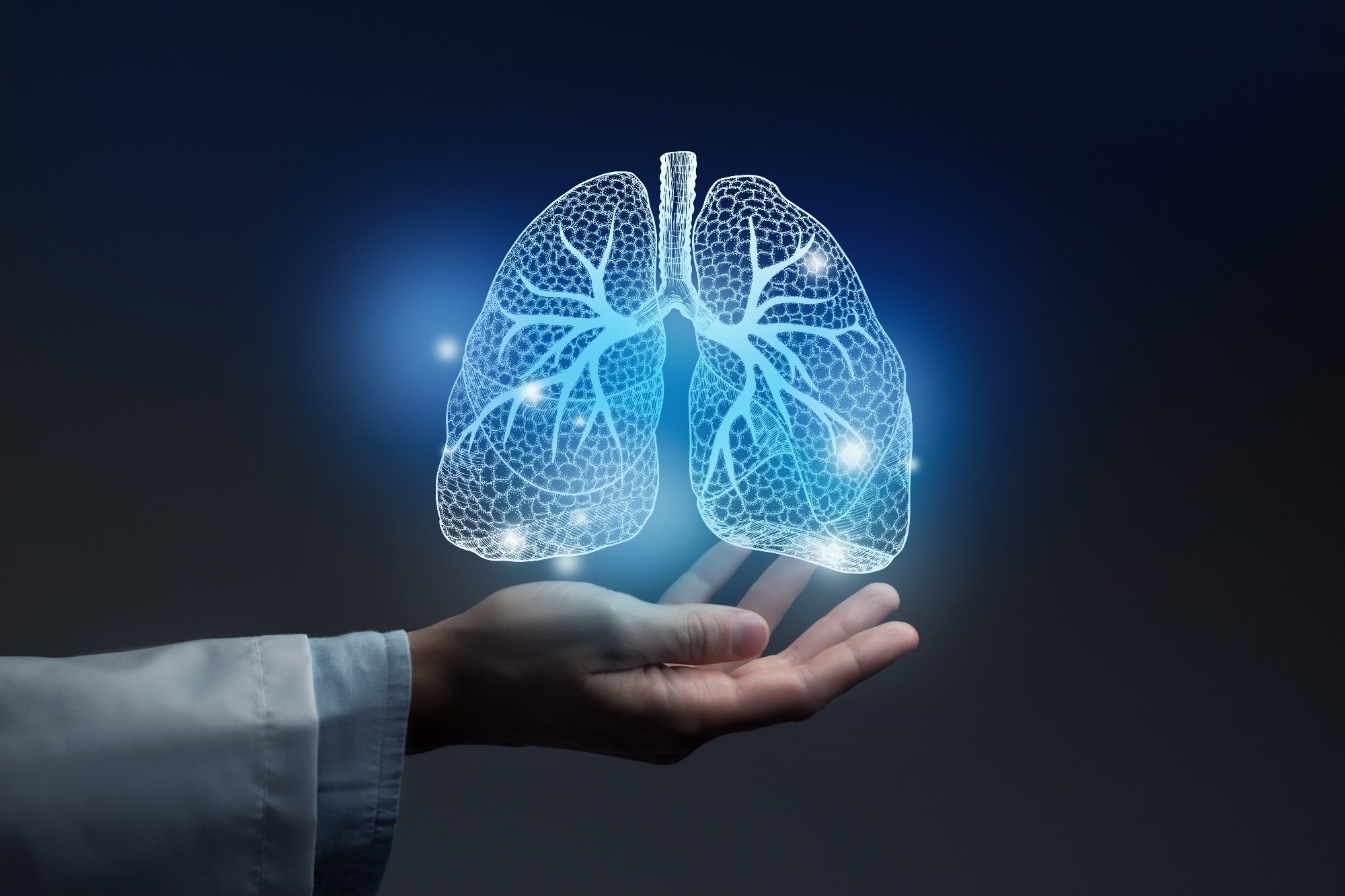In a recent study posted to the bioRxiv preprint server, researchers develop the ‘crystal ribcage,’ a transparent ribcage for real-time lung imaging at cellular resolution.
 Study: Crystal Ribcage: A Platform for Probing Real-Time Lung Function at Cellular Resolution in Health and Disease. Image Credit: mi_viri / Shutterstock.com
Study: Crystal Ribcage: A Platform for Probing Real-Time Lung Function at Cellular Resolution in Health and Disease. Image Credit: mi_viri / Shutterstock.com

 *Important notice: bioRxiv publishes preliminary scientific reports that are not peer-reviewed and, therefore, should not be regarded as conclusive, guide clinical practice/health-related behavior, or treated as established information.
*Important notice: bioRxiv publishes preliminary scientific reports that are not peer-reviewed and, therefore, should not be regarded as conclusive, guide clinical practice/health-related behavior, or treated as established information.
How are lungs monitored?
Lungs are continuously exposed to different stresses and are the sites of fatal pathologies. A mechanistic understanding of the lung’s complex structure, function, and remodeling during early disease stages requires characterizing cause-effect relationships.
The real-time analysis of functioning lungs is challenging. Clinical imaging modalities do not spatiotemporally resolve the dynamic cellular motility and trafficking, capillary flow, and alveolar function during respiration. Furthermore, histological analyses provide snapshots of the lungs, rather than information on temporal dynamics.
Recently, intravital microscopy has allowed high-resolution imaging of real-time microcirculation. Nevertheless, these methods compromise the lungs’ respiratory function, only visualize some alveoli, and fail to capture heterogeneities and rare/dynamic events.
About the study
The present study introduced a transparent crystal ribcage platform for real-time imaging of a functioning murine lung at cellular resolution. The crystal ribcage was designed to provide a physiologic environment ex vivo while mimicking a native ribcage to preserve in vivo physiologic conditions during imaging.
Three-dimensional (3D) molds of the ribcage were developed using mouse chest cavity data, which were used to fabricate the crystal ribcage. Semi-rigid and rigid versions of the ribcage were fabricated using polydimethylsiloxane and polystyrene, respectively. The rigid version allowed negative- and positive-pressure ventilation as in spontaneous and mechanically assisted breathing, respectively.
The researchers confirmed that the crystal ribcage did not affect alveolar function. The crystal ribcage was equipped with ventilators, perfusion pumps, and sensors to preserve and analyze lung functions.
Moreover, the crystal ribcage was attached to a customized arm to position any lung region for microscopic imaging. Mouse models of breast cancer lung metastasis were analyzed.
Study findings
Using the crystal ribcage, infiltrative and nodular phenotypes were observed. Tumors with the nodular phenotype appeared to bulge out of the pleural surface and push into the lung tissue, whereas, infiltrative tumors replaced existing lung tissue.
Alveoli in the nodular phenotype could not change volume, thus impairing their function. This functional impairment extended to up to two alveoli peritumorally.
Alveolar function was not compromised in the infiltrative phenotype, thus suggesting that infiltrative tumors replace existing tissue structures. Early-stage tumors in a carcinogen-induced primary lung cancer model exhibited a nodular-like phenotype. Furthermore, the team observed the remodeling of pleural collagen by nodules into stretched structures.
Collagen surrounding infiltrative tumors retained waviness like a healthy lung. Single cancer cells within capillaries experienced substantial strain and had lower circularity than those present within larger vessels at all alveolar pressures.
The remodeled capillary function was also analyzed by real-time imaging through pressure-controlled perfusion of a fluorescent dye. To this end, dye exclusion was observed intratumorally and around 100 micrometers (μm) peritumorally, thus implying the loss of circulation in blood vessels remodeled by the nodules.
The impact of pneumonia on lung function was also assessed through the crystal ribcage. To this end, whole-lung imaging revealed dense neutrophil infiltration in the hepatized left apex.
Healthy and affected alveoli were similar in size, whereas affected alveoli were unresponsive to the applied pressure due to liquid influx into the airspace and neutrophil recruitment. The local vascular function appeared compromised in infected alveoli.
Single neutrophils were also tracked while modulating vascular and alveolar pressures to examine the effects of circulation and breathing on pulmonary immunity. To this end, reversible changes in neutrophil migration speed were observed in response to the increase in vascular pressure.
In the lobar lipopolysaccharide (LPS) injury model, neutrophils migrated nearly twice as fast at 15 cmH2O than zero pressure. Furthermore, neutrophils directly responded to vascular pressure changes or were indirectly affected by factors changing with vascular pressure. The mechano-responsive behavior of neutrophils was also confirmed in a pneumonia model, wherein neutrophil migration speed was unresponsive to alveolar pressure.
Conclusions
The current study describes the development of a crystal ribcage platform and its ability to illustrate real-time lung function at whole-organ, alveolar, and cellular levels. This ribcage allowed imaging of circulatory and respiratory functions while preserving the native 3D structure and cellular diversity across different pulmonary diseases.
The crystal ribcage described here could be used for real-time imaging of heart function, thereby allowing future investigations of the respiration-circulation coupling in conditions such as arrhythmia and hypertension.

 *Important notice: bioRxiv publishes preliminary scientific reports that are not peer-reviewed and, therefore, should not be regarded as conclusive, guide clinical practice/health-related behavior, or treated as established information.
*Important notice: bioRxiv publishes preliminary scientific reports that are not peer-reviewed and, therefore, should not be regarded as conclusive, guide clinical practice/health-related behavior, or treated as established information.
Journal reference:
- Preliminary scientific report.
Banerji, R., Grifno, G. N., Shi, L., et al. (2023). Crystal Ribcage: A Platform for Probing Real-Time Lung Function at Cellular Resolution in Health and Disease. bioRxiv. doi:10.1101/2022.10.28.514251